School Local Report Card: https://reportcard.education.ohio.gov/school/overview/015737
School Annual Report: School Annual Report School Year 2022 to 2023
Publications about Language Learning and Immersion
The New York Times – “The Superior Social Skills of Bilinguals” – March 1, 2016
“Being bilingual has some obvious advantages. Learning more than one language enables new conversations and new experiences. But in recent years, psychology researchers have demonstrated some less obvious advantages of bilingualism, too. For instance, bilingual children may enjoy certain cognitive benefits, such as improved executive function — which is critical for problem solving and other mentally demanding activities. Now, two new studies demonstrate that multilingual exposure improves not only children’s cognitive skills but also their social abilities.”
Medium – “How Learning Mandarin Is Changing The Hearts, Minds, And Brains Of Kids” – December 18, 2015
“More than half of the world’s population is bilingual, but less than 20 percent of people in the United States speak a second language….There are actually more than 1,000 immersion programs in the United States; over half are Spanish-language programs, while less than 20 percent are Mandarin. But the tide is changing: In 2005, there were just 19 Mandarin immersion programs around the country, whereas today there are more than 200—and not only in states like California with large Asian populations, but also in places like Casper, Wyoming, and Fitchburg, Wisconsin.”
The New York Times – “Dual-Language Programs Are on the Rise, Even for Native English Speakers” – October 8, 2015
“In New York City, there were 39 new or expanded dual-language public-school programs this fall, in addition to an increase of about 25 programs two years ago. The city has about 180 such programs, according to the Department of Education. Languages offered now include Arabic, Chinese, French, Haitian-Creole, Hebrew, Korean, Polish and Russian, as well as Spanish. In Utah, 9 percent of the state’s public elementary students are enrolled in dual-language programs. In Portland, Ore., 10 percent of all students, and nearly one in five kindergartners, participate. Statewide efforts to increase the number of programs, and expand access to them, are underway in states including Delaware and North Carolina.
The Atlantic – “America’s Lacking Language Skills” – May 10, 2015
“One solution cited by advocates is dual-language instruction, in which a variety of subjects are taught in two languages, thereby eliminating the need to hire a separate language instructor. At the elementary level, these programs appear to have an immediate impact on kids’ learning. Bill Rivers, one of the country’s most prominent language lobbyists, points to significant evidence that students in dual-language programs outperform their peers in reading and math by fourth grade—regardless of their race or socioeconomic status. And advocates say dual-language programs are cost-effective because they typically don’t require extra materials for the language instruction; a science textbook, for example, would simply be published in the target language. That means districts buy the same number of materials as they would without the language element. The same goes for the number of teachers needed—though those teachers need to be bilingual as well.”
NBC News – “Bilinguals Have Better College Outcomes, Labor Advantages: New Study” – October 14, 2015
“Children of immigrants who can speak, read and write in both English and the language spoken at home have an advantage in the labor market, a new report released Tuesday finds. The report … shows that individuals with immigrant backgrounds who only speak English and don’t retain the language spoken at home lose between $2,000 and $5,000 annually. In contrast, those with immigrant backgrounds who know both English and the language spoken at home—also known as “balanced bilinguals”—are more likely to earn more money than those who only speak English. They are also more likely to graduate from high school, go on to college, enter higher status occupations and have more social networks…Latinos who speak both Spanish and English go to four-year-year colleges at higher rates.”
ERIC Digest “What Parent’s Want to Know About Foreign Language Immersion Programs” – August 2003
Click here to view the .PDF
